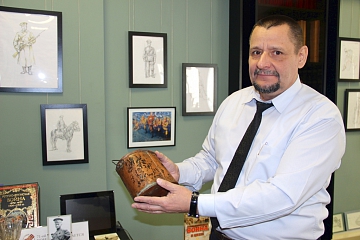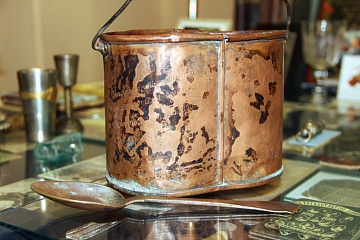Unique exhibit from the times of the First World War has been displayed at ASU History Museum
 16 February is one of the heroic dates in the war history of Russia. On 16 February 1916 the Erzurum Offensive took place. It was a major winter offensive during the First World War, which led to the victory of the Russian Army.
16 February is one of the heroic dates in the war history of Russia. On 16 February 1916 the Erzurum Offensive took place. It was a major winter offensive during the First World War, which led to the victory of the Russian Army.
History Museum of Altai State University organized the “Remember the War” exhibition dedicated to three wars of the XX century: the Russo-Japanese War, the World War I and the World War II. The museum presented a unique object related to the Erzurum Offensive.
The object revels to be a soldier’s mess tin with a guarding quotation from the Bible engraved on it. It says: “A thousand may fall at your side, ten thousand at your right hand, but it will not come near you.” The mess tin belonged to Russian soldier Nikolay Sukhodrev, who participated in the Erzurum Offensive in February 1916.
“Our exhibition is called “Remember the War”. By this slogan and the whole exhibition we wanted to show what a great price people pay for the war and how big are the human losses. Thus, 138,505 people were killed during the Russo-Japanese War in 1904–1905, 21,5 million people died during the World War I, and over 72 million people fell during the World War II. These figures are terrible, and the most awful thing is that our society heads into the war again. That is why I think that we must remember the lessons of war, tell about them to young people and conduct patriotic education at schools and universities. It’s pleasant that students are interested in the exhibition, so we decided to prolong it till March,” said Director of History Museum Gennady L. Nekhvedavichus.
305 original exhibits have been presented in the framework of “Remember the War” exposition. Some of them are unique, especially those related to the times of the Russo-Japanese War and the First World War: the original Imperial Manifesto by Emperor Nicholas II; a wineglass that belonged to Commander-in-Chief of the Russian Army, Grand Duke Nikolay Nikolayevich Romanov; a soldier’s cup made of the missile nose in 1916 and many other objects.

